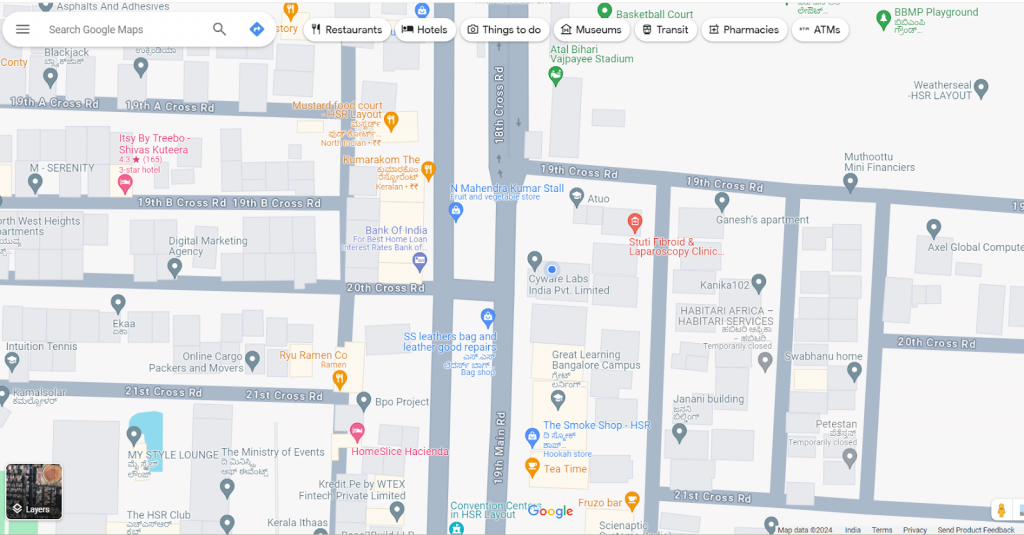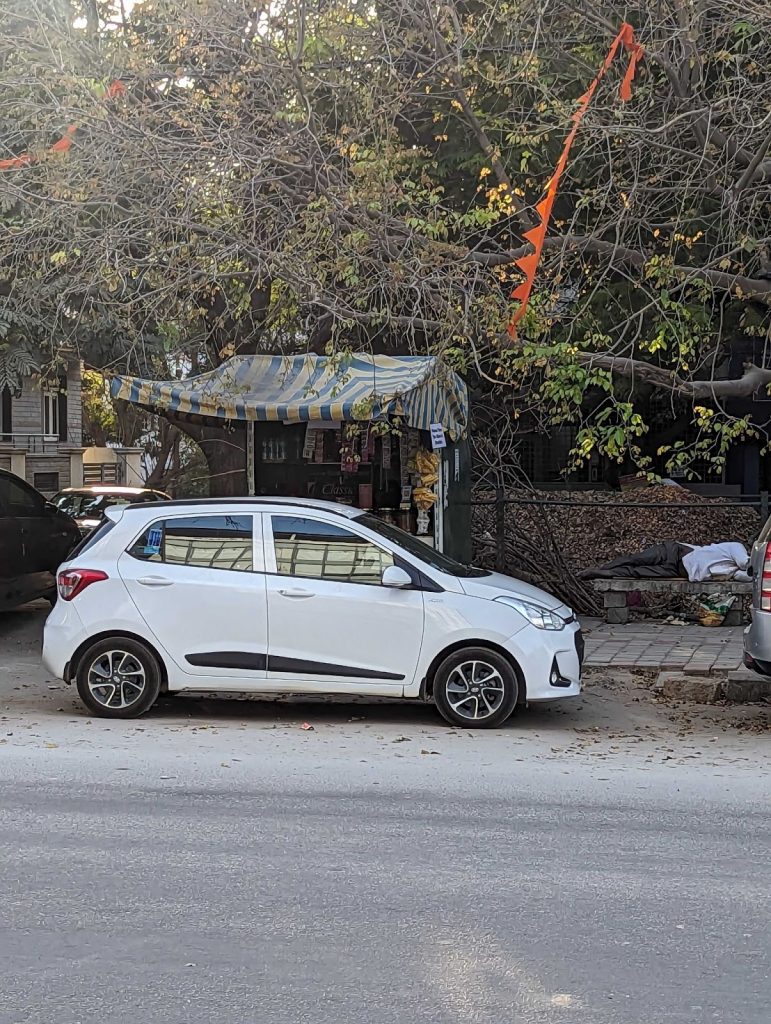When walking down a street you might have noticed how some locations seem to have higher than usual activity.
This location might be a tourist attraction, a fast-food restaurant, or even a corporate headquarters.
These are locations that can represented by their geographic coordinates and represent a location of value to myriad people.
But what exactly distinguishes these spots, and why does it matter?
In this article, we aim to help you understand the basics of Points of Interest and how POIs are used in different categories of industries.
What is a Point of Interest?
When you are navigating toward an unknown location, there will be specific markers helping you determine the composition of that area.
Therefore, this marker is a point on a map that interests you in navigating to your location.

Let’s understand this with an example.
The above image shows the Google map location of the GeoIQ headquarters at HSR layout, Bangalore.
We captured this image of the headquarters from across the street.

As expected, clients can navigate to the headquarters with the help of Google Maps since the location is a point of interest.
Now, consider the following point on the map that is opposite the GeoIQ headquarters.

According to the map, there is nothing in this location.

However, there is a small shack selling daily necessities to office workers in the small trade area at the coordinates mentioned above.
Even though this is a place that generates revenue and services office workers regularly, it is not a point of interest.
How Is a Point of Interest (POI) Generated?
The source of a point of interest is data collection. However, the data can differ depending on factors like privacy, granularity, and accuracy.
- User-generated data: Every time you or your family go out for dinner, take a picture, and upload it on Instagram, you tag the location as a point of interest.
- Government records: These are one of the easiest ways to collect data about any location. The government is a treasure trove of location information ranging from areas witnessing increased construction to areas displaying a negative growth trend.
- Web scraping: Data collectors trawl digital street maps like Google Maps and OpenStreetMap to directly extract information about Points of Interest.
How Are Points of Interest (POI) Represented?
There are a few different ways to display Points of Interest:
- Latitude and Longitude Coordinates:
12.910106424716957, 77.64473495830713, these coordinates are the most straightforward ways to represent a Point of Interest. Pasting these coordinates on your Google Maps search bar will allow you to take the first step toward identifying profitable locations for expansion. - Postal Codes: The secret sauce behind how bills get to our houses monthly.
- H3: A hierarchical indexing system combining the benefits of a hexagonal global grid system. Developed by the engineers at Uber, this method allows for a granular interpretation of the critical factors responsible for the success of a point of interest.
Coincidentally, GeoIQ employs H3 system to identify locations with the highest probability of success for retail expansion in our custom-built models.
How Are Points of Interest (POI) Used?
Insight derived from point-of-interest data empowers its users to determine a successful location based on the presence of the location. The locations transform the ideas generated by the human geography in the area and build an actionable model.
Governments and retail businesses employ Points of Interest data to build equitable solutions for the problems affecting citizens/consumers.
The presence of a set of POIs in a location determines the existence of the target group within the location’s trade area. This is because humans are creatures of habit, and people with specific characteristics tend to gather around a central location.
How Do Governments Use Points of Interest(POI)?
The presence of specific vital public and civic infrastructures enables governments to provide holistic welfare assistance to vulnerable populations.
For example, ration shops and primary health centers help Governments invest additional funds in the area.
How Do Retail Brands Use POI?
Point of Interest analysis helps retail brands accurately identify the presence of their target audience. Analysis of POIs also helps retailers predict the performance of their competitors and gauge the interests of the target audience in the trade area.
How Do Food Brands Use Points of Interest?
Speed is the differentiating factor between the success and failure of a food delivery brand. Incorporating POIs helps food brands determine the presence of target customers in a selected catchment area. POI data helps brands establish the presence and concentration of the target market in the catchment area.
How Do Logistics Brands Use POI?
Logistics brands are in a similar vein as food brands. Last-mile delivery brands leverage POI data to create an accurate map of the locations to optimize the delivery routes while improving efficiency and coverage.
To Summarize: What Is a Point of Interest?
A location enables the identification of the socio-economic make-up of the audience frequenting the area.
Point of Interest only helps identify the presence of a target group. Retail brands need to leverage data-backed intelligence to determine the revenue earnings potential of any given location.
To help retailers reduce the ambiguity in identifying the presence of a target group and to enhance a brand’s ability to expand into a new location, GeoIQ presents a revolutionary new solution.
Presenting RetailIQ
RetailIQ is a cutting-edge AI solution revolutionizing offline expansion for the retail section. It is built on top of extensive location data and brand data to give street-level answers to expansion problems.
RetailIQ is a powerful tool providing site recommendations to maximize success at the store level and minimize the risk of closure. It also helps identify the total addressable market, conduct competition analysis, better understand your target audience traits and their presence, and perform detailed site analysis and reports, all adding up to a successful expansion strategy.


